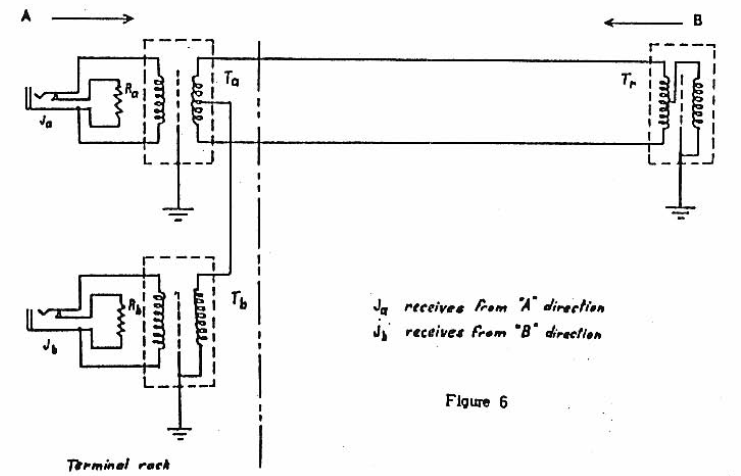


Antentop is FREE e-magazine devoted to Antennas and Amateur Radio an
Special page devoted to
MEMORANDUM ON THE BEVERAGE WAVE ANTENNA
FOR RECEPTION OF FREQUENCIES IN THE
550 - 1500 KILOCYCLE BAND

Custom Search
|
ANTENTOP- 01- 2016 # 020 |
Memorandum on the Beverage Wave
Antenna |
|
|
|
|
The
system of changing directivity of the antennas and remote erasure
adjustments as outlined is somewhat inconvenient because of required
travel, terrain condition, time consumption and the fact that
the antenna when made directive in one direction is not available
for service in the opposite direction. |
To overcome
these undesirable features, a modified arrangement of the terminal
coupling units and rejection system may be employed which permits
the use of a two-conductor wave antenna for unidirectional reception
both forward and rear simultaneously on the same or different
frequencies with the band for which the antennas are designed,
and with all variable factors under control at the receiver.
The circuit is shown in Figure 6. |
|
Two
Conductors for Simultaneous Forward and Rear Unidirectional Reception
|
|
|
INTER-ANTENNA COUPLING In the event
the erection of more than one wave antenna may be contemplated,
the question of inter-coupling may arise. |
Tests covering this feature at Grand Island using a standard signal generator
indicated that broadcast band wave antennas may be crossed within
a few feet of one another at angles of sixty degrees or more without
detrimental coupling effects or may be safely paralleled when
spaced four hundred feet or more; in either case without noticeable
or excess coupling. When the antenna conductors run parallel over wire fences with non-conducting
supports, the fence wires, to avoid interaction, should be broken
with insulators at even lengths of about seventy-five feet. Conductors such as fence wires and metal posts rubbing against one another
within a hundred feet or so of the antenna may be assumed to be
a source of noise generation in the antennas. |
|
|
|
|
Page- 87 |
|
 |
 |
|
 |
Just for Fun:

Powered byIP2Location.com
Thanks for your time!
Last Updated:
January 4, 2020 22:27





